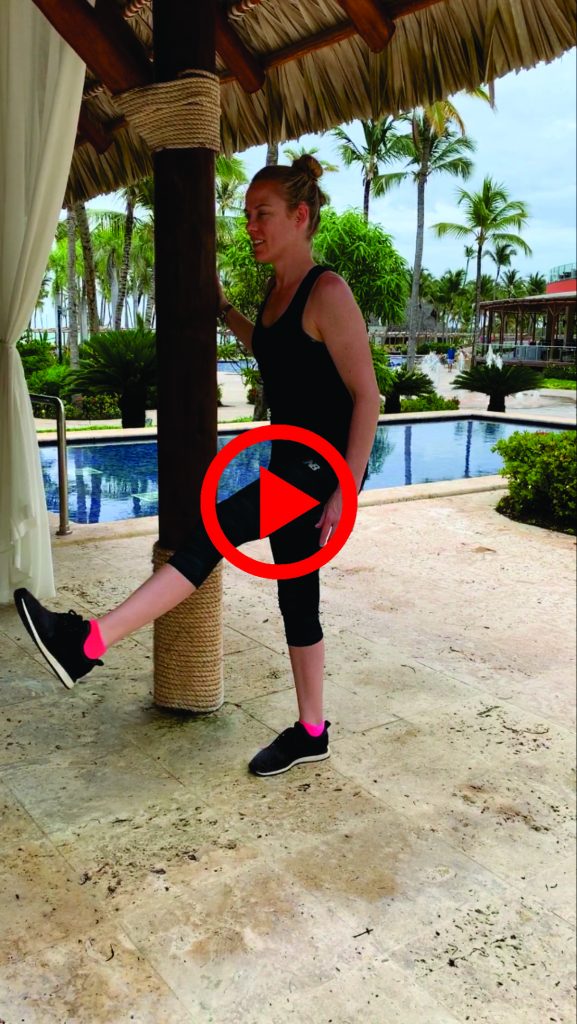Our medical review team will ensure the following criteria is met:
1. Is it original writing? Does the article contain significant portions of plagiarized materials?
2. Are the main concepts well and clearly defined?
3. Are the articles central tenets backed by adequate evidence?
4. Are there any gaps or inconsistencies?
5. Is the writing clear and easy to understand?
6. Does it advance knowledge?[/mpc_icon_column]
Have you ever experienced knee clicking when walking? Or heard cracking, popping and creaking sounds in your knees? If so, you may be wondering what it is. As the weather starts to change, with increased moisture in the air, you may find your knees are bothering you and /or “speaking up”.
As a practitioner, I find that as the weather changes many more patients are saying that they’re starting to feel aches and pains. The most common aches and pains I am hearing about are in the neck, low back and knees. One of my patients asked me if the change in weather can cause knee clicking when walking or popping sounds in their knees. So I think this is worth talking about….
Identifying ‘Knee’ Sounds
Personally, I have experienced these sounds in my knees since I was a teenager and still do on occasion get knee clicking when walking when I am not making time to ensure I have a balanced body. When I was teenager, I remember being very curious, concerned and even confused about what the sounds in my knee were. There are different types of sounds which may indicate different causes.
Creaking
- A creaking sound (technical term is ‘Crepitus’) may indicate that the cartilage is rubbing on the bone surface or bone on bone. This may be sign that there is something wearing away resulting in degeneration. This is often a result of long-standing abnormal pressure and function of the knee.
Cracking
- Cracking or popping sounds (technical term is “cavitations”) are the most common sounds people hear in their knees. This sound is often caused when a muscle or tendon is tight and is creating a popping sound as it slips over a bony prominence. The popping sound may also be the release of oxygen build up inside of your knee joint itself. If you can reproduce the sound repetitively it’s more likely the sound is coming from tight muscles and tendons. If it’s something that pops and then you don’t hear it for another 20 minutes or until the next day, it might be from the oxygen building up.
When To Seek Help When Experiencing Popping, Cracking or Knee Clicking When Walking?
Even healthy knees can experience knee clicking when walking and make these popping and cracking sounds. Therefore, when you hear these sounds coming from your knee in the absence of joint swelling or pain, it doesn’t necessarily mean there’s anything wrong with your knee. However, if you are experiencing joint swelling and pain, that’s something that you should have looked at by your healthcare practitioner for a knee examination.
Our practitioner will do orthopedic tests to get a better understanding of the cause. Sometimes the creaking and cracking sounds may be related to internal damaged that could warrant further testing and imaging. These are used to confirm a diagnosis and steer you in a specific direction of treatment options and rehabilitation protocol.
The Power Of Stretching For Your Knees
With or without sounds coming from your knee, most people will benefit from stretches! To learn more about this, click here to read, “THE POWER OF STRETCHING – 4 WAYS IT IMPACTS YOUR BODY (AND MIND) IN A POSITIVE WAY.”
The stretches below will help you restore and maintain a balance in your body. With or without symptoms, we often have imbalances as a result of lifestyle habits such as;
- crossing our legs when we sit
- wearing poor unsupportive shoes
- sitting slouched and twisted at a computer
- driving for long periods of time
- even sitting on a wallet
These are some of the many examples of how your body shifts out of balance. When your body is out of alignment, there are muscles that become weak, tight and no longer activate, which results in abnormal wear and stress on the joint.
Think of the knee cap as a train that rides up and down in the front of your leg in a specific track when your quadriceps muscle contracts and relaxes. The knee cap is surrounded by muscles and ligaments. As muscles on one side of the knee cap tighten or weaken, it pulls on the knee cap and derails the smooth track, putting uneven pressure on the patella (knee cap) which could lead to irritation and inflammation under the knee cap. This often results in tightness, pressure, aches and pains. This uneven tracking may also increase the risk of further injury if left uncorrected.
How To Get The Most Out Of Stretches
In order to get the most out of stretches, I recommend warming up your muscles. Go for a short walk or bike ride. You can also warm up your body with a series of controlled movements or dynamic stretches which will increase body temperature, activate the nervous system and improve your range of motion. An example of a dynamic stretch is swinging your leg forward and backwards like a pendulum.
Typically, dynamic stretches are used for warming up the body prior to exercise which is then followed by static stretches. Static stretches are typically held still for 30 to 60 seconds. Typically, a stretch is felt in one specific muscle with static stretching
Let’s Get Started!
Here are some basic stretches that you can try at home. Be sure to hold these stretches for 30 to 60 seconds, and then repeat 3 times. Always stretch both legs.
Leg Swing Dynamic Stretch:
This is a great dynamic stretch for your knee as it warms up muscles that cross the knee joint; quadriceps & hamstring.
- Support yourself on a wall or a post with one hand ensuring there is nothing in front of or behind you
- Ensure you are standing straight and your core is engaged
- Swing one leg forward and back like a pendulum
- Start to swing it lightly and gradually increase your range of motion
As you get blood flow to the muscles, you will feel yourself loosen up and your range of motion increase. Relax your hip joint as much as possible. Do 20 swings for each leg.
Standing Quadricep Stretch
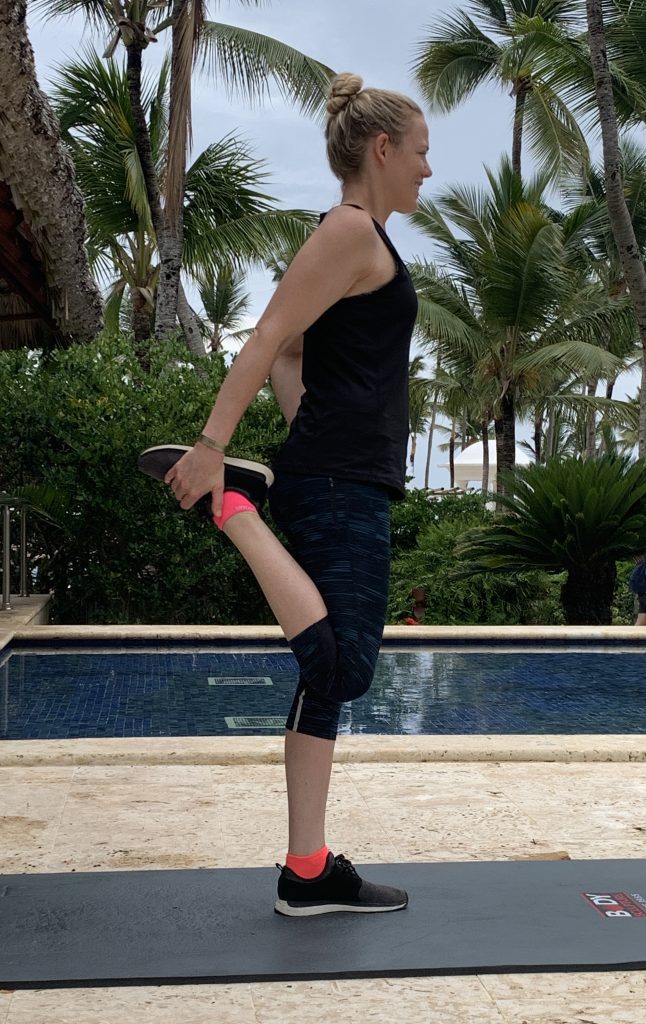
This is a great beginner exercise to loosen up tight muscles.
- Start with your shoulders pulled back and down
- Balance on one foot while bringing your opposite foot up and holing onto your ankle
- Ensure that your knees stay aligned and you do not pull your knee back past your standing knee as it results in stress on the low back
- Slightly thrust your pelvis forward and tighten your buttock muscles in order to increase the stretch
*If you experience knee pain, swelling or restricted flexibility, try modifying the stretch:
- Hold onto your pant leg rather then your ankle

Alternative to the modification:
- Hold on to a support wall or post
- Place one foot on a surface (stair, table, foot stool)
- Tilt your pelvis a little bit forward and you will fee a stretch in your quadriceps
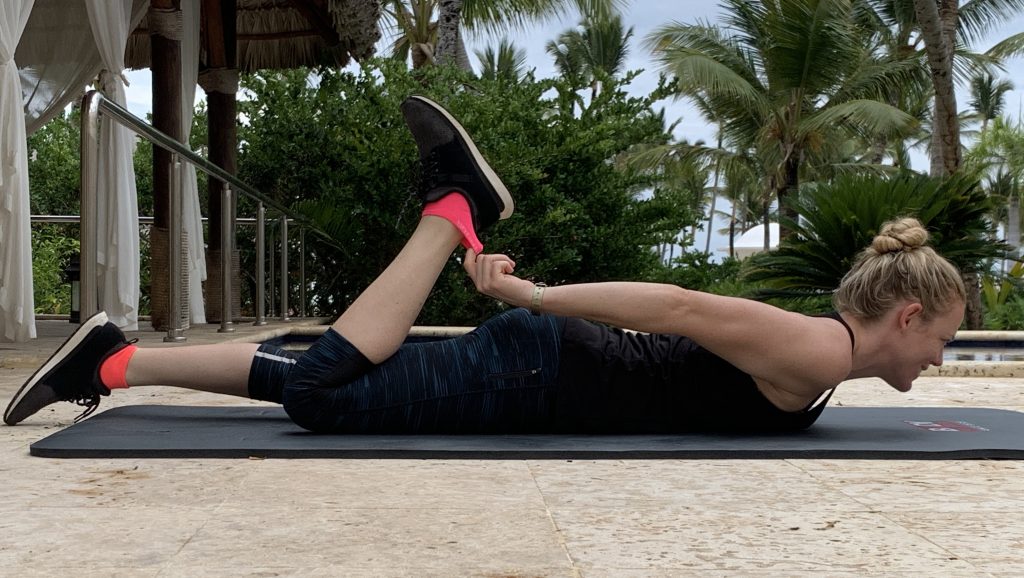
*Alternative to the alternative modification:
- Lay face down and pull on the bottom of your pant leg to pull the stretch into the quadricep.
Hamstring Stretch
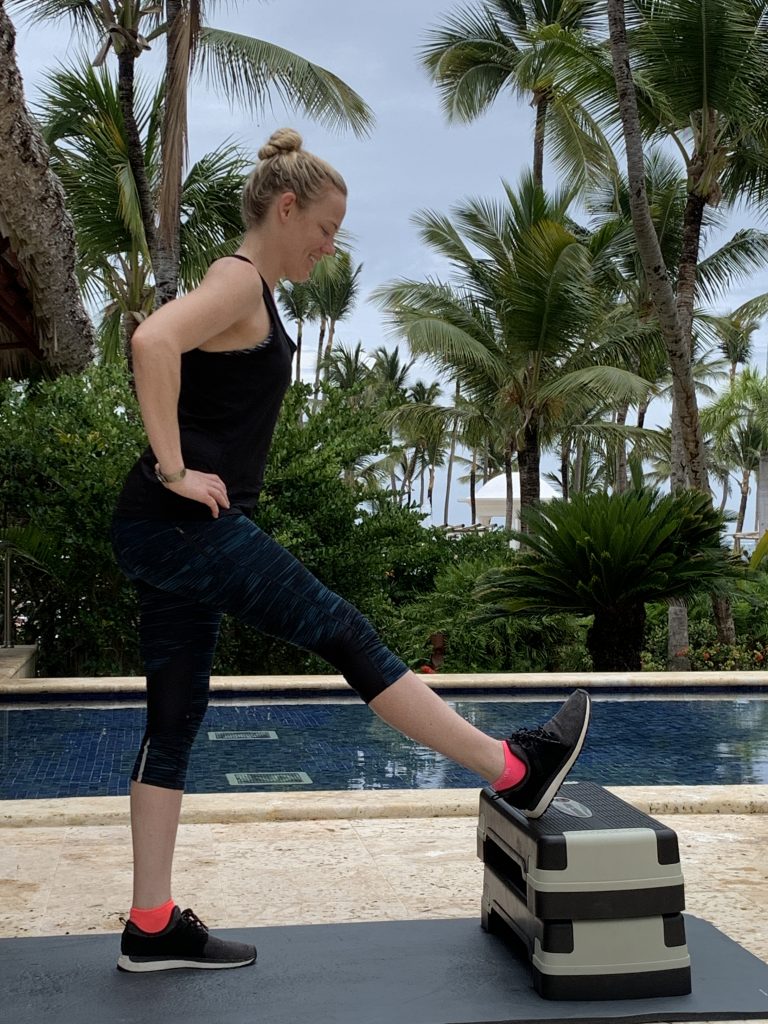
- Holding onto a supportive wall or railing, place one ankle on a slightly raised surface (a step or a curb) keeping your hips facing forward and your standing knee bent
- Slowly bend your standing knee until you feel a very mild pulling or stretch on the back of your raised thigh
- Be sure to keep your low back straight
*If you have poor balance, try sitting on a bench, couch or bed slightly rotated 45 degrees
- Put one leg up on the surface that you are sitting on and sit up tall
- Point your toes to your nose and slightly shift your pelvis forward to engage the hamstring stretch
Psoas Stretch
If you sit for long periods of time or hear clicking and popping in the front of your hip, stretching our psoas is key.
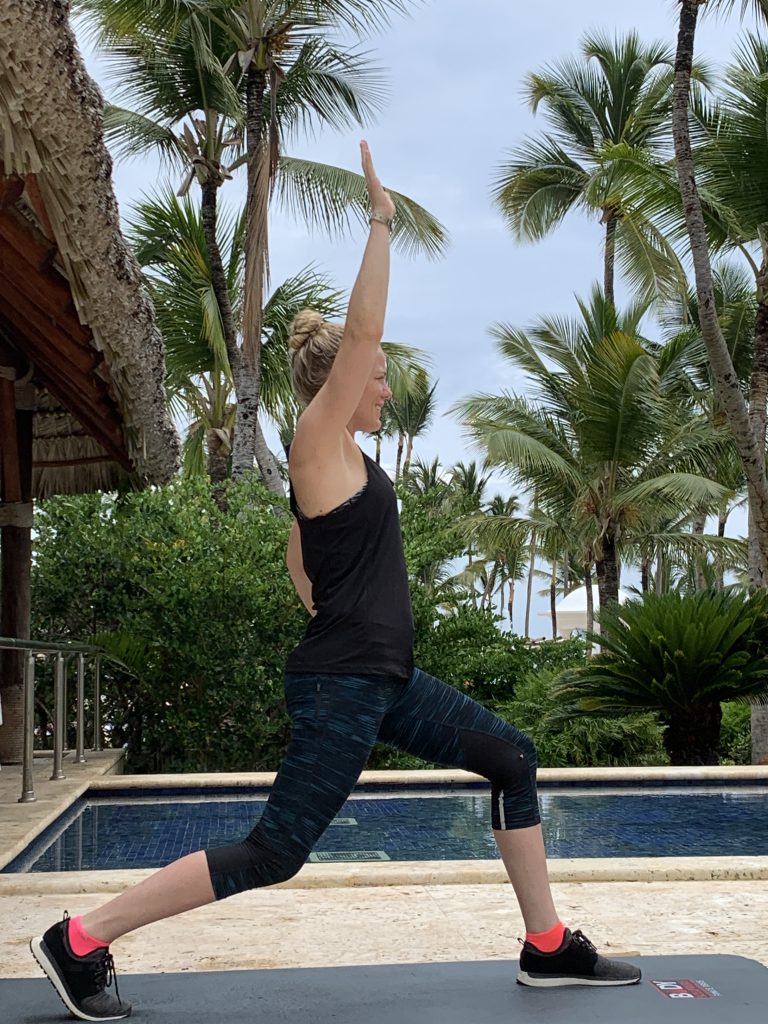
- Start in a slight lunge position with both feet pointing forward
- Keep your back straight and pelvis tucked forward and tighten your buttock muscles
- Hold onto a wall or chair for support if needed
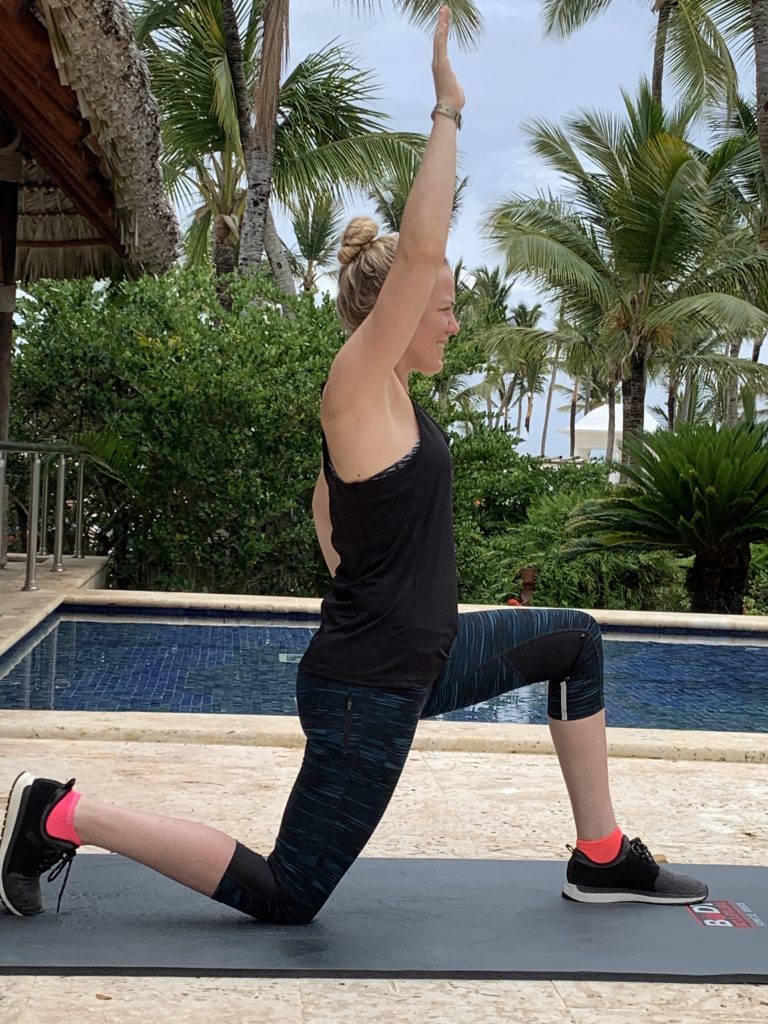
*Alternative:
- Drop your back-leg knee to the group and shift your body forward
- Lift your arm that is on the same side as the knee that is on the group up in the air
IT Band Stretch
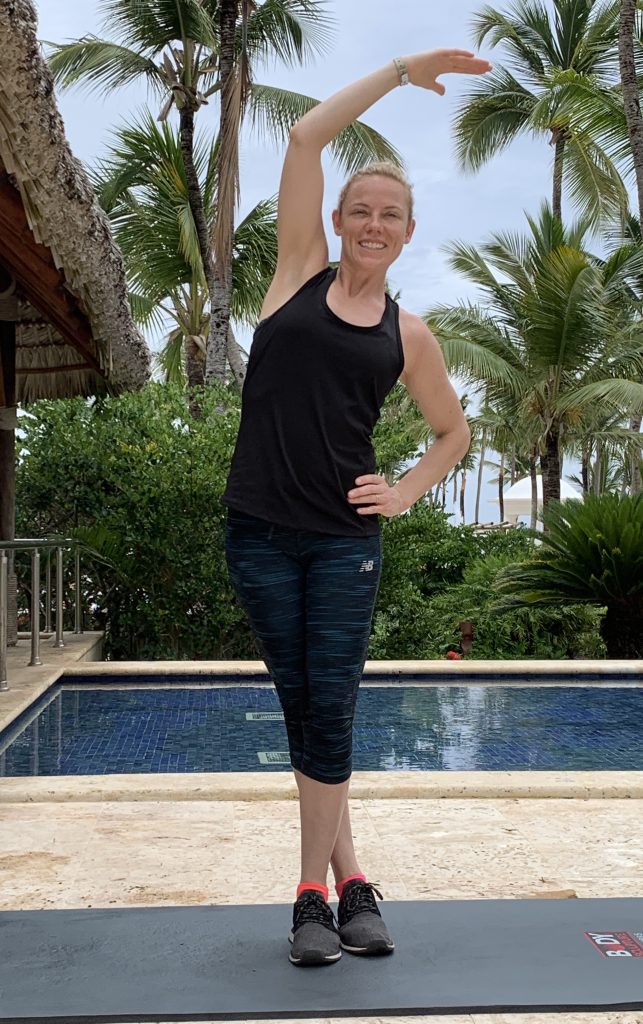
- Stand tall and cross one leg in front of the other
- Raise the same side arm as the back leg high overhead
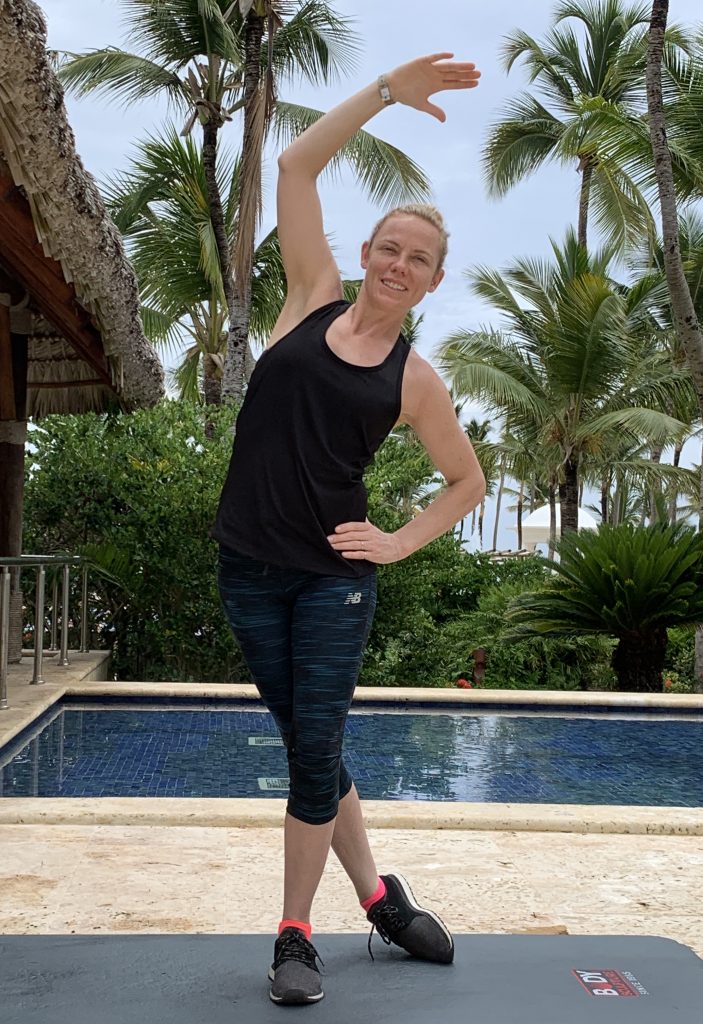
To increase the stretch, extend the back leg further behind you so your pinky toe is the point of contact to the floor.
Note: you will not feel the same stretch sensation with this stretch however it is still productive!
I also recommend using a hand-held roller or rolling pin and rolling out your IT bands (the side of your leg) for 3 minutes both sides daily to break up adhesion’s (scar tissue) and increase blood supply.
It doesn’t surprise me when a patient takes this advice and does their homework daily for 2-3 weeks and comes back to report they no longer have knee clicking when walking or popping in their knees. Remember, don’t push it too hard and stay within your pain threshold. Relax and breath deeply and enjoy taking care of you. You deserve it!
Further Reading
In the words of Dr. Casey Sinclair;
“YOU must address all areas of your health for your body to heal. This includes your mindset, nutrition, exercise, environment, and nervous system. Many people make it all about one thing (i.e., Nutrition or exercise) and neglect the rest. This alone will not give your body the opportunity it needs to heal”.
Click here to learn more about how our perceptions affect our pain.


